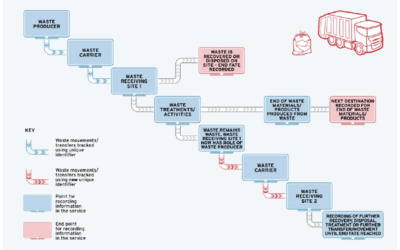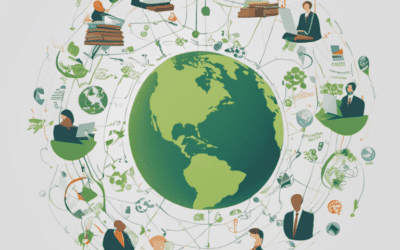US Waste Legislation: Governments around the world are continually improving and updating their legislation around waste management and recycling issues. That’s because it has become clear that regulation and enforced compliance are the methods most likely to drive a more commercially sustainable and ethical approach.
The USA is no exception. According to the Environmental Protection Agency (EPA), the total generation of municipal solid waste in the USA in 2018 was 292.4 million tones. The EPA’s statistics say that, of this waste:
- 69 million tonnes were recycled
- 25 million tonnes were composted
- 7 million tonnes of food managed by other methods
- 146 million tonnes were landfilled
The Agency also states that, in 1960, 94% of municipal waste ended up in landfill, while in 2018, that figure had decreased to 50%.
The goal of governments and waste management professionals and academics is to prevent materials from ending up in landfill.
In the USA, there are significant challenges to achieving this goal, including:
- Consumer and business understanding of what can and cannot be recycled
- Recycling industry lags behind consumer desire to recycle
- Finding domestic markets for recycled or secondary market materials
- Inconsistent measurement of progress and impact
- Standardisation of collection, separation, treatment, reuse and recycling approaches
What legislation is in place?
In the USA, the EPA regulates waste from homes, businesses and industry. It does this under the Resource Conservation and Recovery Act (RCRA) which was first introduced in 1976. The RCRA is designed to manage all types of waste, including hazardous waste. It covers everything from recycling and recovery to cleaning up waste that has been leaked or not disposed of properly.
While the RCRA is national legislation, the practical functions of waste and recycling management are managed at municipal level. So, the Solid Waste Program, which is part of the RCRA, encourages the environmental departments within each state to draw up their own plans to manage solid waste collection and disposal.
Most states follow the federal rules and many have added more stringent local legislation, particularly for the management of hazardous waste. This ability for states to adopt their own approaches above and beyond federal requirements mean that waste and recycling management requirements could vary significantly from one state to another – including how they are charged for – and this can result in a fracturing of the market, and the ability of commercial waste management companies to provide a comprehensive service.
A national recycling strategy
In 2019, the EPA released its National Framework for Advancing the U.S. Recycling System. This led to the National Recycling Strategy: Part One of a Series on Building a Circular Economy. This identifies the actions that are required to meet the current challenges in the USA’s waste management system and is focused on solid waste. It is directed towards achieving a circular economy, although it recognizes that recycling alone is not the answer. Future work on the Strategy will include product redesign, source reduction and a move towards reuse.
Legislation to improve recycling rates is being implemented across the USA. There are a range federal and state laws in practice to reduce food waste, increase composting and recycling by Anaerobic Digestion (AD). Similarly, Extended Producer Responsibility (EPR) legislation increases the value of materials primarily used in packaging and in turn, helps to build recycling infrastructure to return value to the communities served.
What does this mean for waste and recycling companies?
A legislative programme for waste and recycling doesn’t just affect consumers and businesses – it affects those businesses that are directly involved in collecting, sorting and processing waste materials. They will have to show that they can handle the requirements of improved recycling requirements, and that they are disposing of the waste they collect responsibly.
And these companies have a considerable commercial opportunity from the circular economy. Instead of collecting waste and sending it elsewhere, they can create new income streams by selling materials such as metals and timber into a secondary market. The increased legislative requirements come with a significant prospects for growth, if a considered approach is taken.
Organisations who embrace policy changes and invest in AD Plants and Materials Recycling Facilities (MRFs) with the associated technologies to speed sorting like AI, Robotics and Optical Recognition, will gain both financially and be at the forefront of opportunities associated with the circular economy.
How can companies take advantage?
Waste and recycling management is a complex business. From customer acquisition, contracts, orders, route management, drivers, weighbridges, to handling new circular economy income streams, businesses need to have good visibility across their operations in order to find efficiencies, build effective processes and manage reporting requirements.
Our unique waste management software, Waste & Recycling One, has been designed to help businesses do exactly that, and is currently in operation in the USA waste and recycling sector. To find out more about how it could help your business meet national and local waste management requirements, just contact us today.
To find out more, contact our team today or visit our showcase below.






